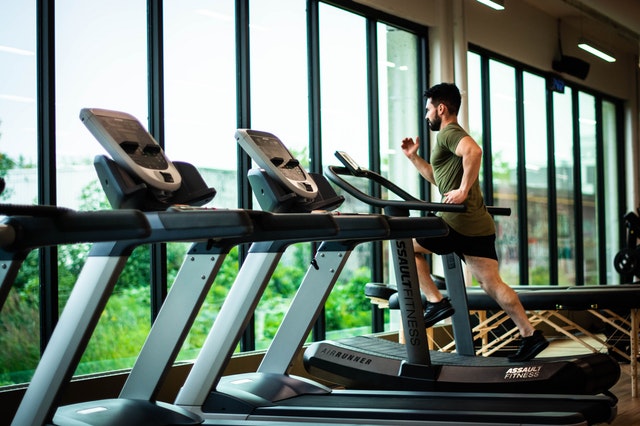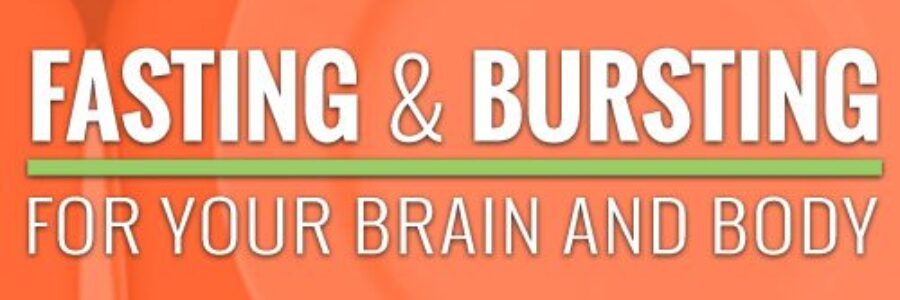Fasting and exercise are two major aspects of cultivating a healthy lifestyle, but should you combine them? I’m here today to answer all your questions regarding exercising while fasting. We will explore the benefits of exercising in a fasted state, including the difference between cardio, burst training, and weight training, as well as some simple tips on how to implement it to reap the most benefits of your fasted workouts.
Is It OK To Exercise While Fasting?

It is OK to work out while fasting because the key to weight loss and muscle gain is not calories or exercise but hormone optimization. The studies demonstrate incredible benefits to intermittent daily fasting alone, but combining fasting with burst training takes both benefits to a new level. Combining the techniques raises growth hormone and makes you more hormone sensitive, which is the key to staying youthful and lean.
Many people dwell on calories in/ out and fear the impact of muscle loss that theoretically occurs when you exercise without having recently refueled. Still, when you understand the beneficial effects of exercising during a fasted state on the body’s hormones, you’ll see that fasting and exercise aren’t only OK; they are the ultimate way to boost your health and body composition.
Is It OK To Exercise on an Empty Stomach?
Not only is it OK to exercise on an empty stomach, but it increases the benefits of exercise and fasting. I call this a Multi-Therapeutic Approach (MTA), whereby the synergy of two health-promoting things boosts each other’s gifts to a level they couldn’t reach as isolated therapies.
One of the best ways to take advantage of these benefits is to work out in the morning before breakfast.
Intermittent Fasting and Working Out
Working out before breakfast is another way to say you exercise during intermittent fasting. An intermittent fast is a daily portion within the 24-hour clock that your body goes without food (including the period you sleep). The IF window begins when you consume your last bite of food or drink (other than water) before bed and ends the following day when you take your first bite.
To reap the most benefits, the length of your intermittent fast should be between the 16 to 18-hour range. This means, for example, eating between 10:30 am and 6:30 pm.
When to Workout While Intermittent Fasting
The best time to work out while intermittent fasting is likely upon waking or shortly after to support the body’s natural circadian rhythm. Studies show that exercising (or eating) too close to bedtime can interrupt deep and REM sleep levels, so best save it for the following day.
Ideally, you don’t want to eat directly after a workout for the same reasons you’re exercising in a fasted state: hormone optimization. Studies show even waiting 2-3 hours after a workout before eating promotes a rise in growth hormone (the fitness hormone), which helps to make you a fat burner and replace the used energy (sugar). It’s all about survival and energy conservation; adaptation to the stress created by a high-intensity workout is why a hormone shift occurs. We are simply taking advantage of the body’s innate response for survival.
Suppose your schedule only permits a lunchtime workout. In that case, you can exercise in your available time and then benefit from the hormonal boost by refraining from eating until 2-3 hours after exercising.
Cardio While Intermittent Fasting
The hormonal benefits you reap while exercising in a fasted state are due to the depleted glycogen stores that occur when you fast. Doing cardio while intermittent fasting is OK, but your performance will hinge on how fat-adapted your body is (how good it is at burning fat for fuel instead of glucose). If you’re new to fasting and exercise, you can expect your performance to drop a little (stamina, etc.); it can take up to 6 months for some athletes to fully adapt their endurance to this new fuel source. Ie. If you’re a competing athlete, and your race results are your primary goal, don’t switch to fasted training a couple of weeks before a competition.
If you are doing cardio in a fasted state, avoid extending the fast post-workout, and opt to refuel right when you finish.
Burst Training and Intermittent Fasting
Burst training (high-intensity interval training, or HIIT) involves at least four minutes of intense activity combined with rest for only around 20 minutes. Not only is it time efficient, but studies show that burst training provides a high degree of health benefits that you cannot get from aerobic exercises, such as the tremendous boost of human growth hormone (HGH).
The benefits of burst training include turning back the biological clock in your muscles and brain, boosting growth hormone, improving body composition, boosting brain function, boosting testosterone levels, and preventing depression. The benefits of using burst training while intermittent fasting increase all these benefits. Burst training is the optimal exercise method to incorporate into your short period and to improve the benefits even more; you should continue to fast for 2-3 hours post-workout.
Should You Lift Weights While Fasting?
In short, yes, it is OK to lift weights while fasting, but you need to be mindful here, too, of glucose’s role in repairing your muscles after a major weight-lifting session, especially during a fasted state.
When you exercise in a fasted state, your glycogen stores are already depleted. If your workout for the day involves heavy lifting, you can do so in a fasted state, but you should prioritize a meal immediately following your activity. Unlike a burst exercise session, heavy lifting puts enough stress on the body to warrant an immediate re-feed. Like a cardio session, a lifting session while fasting might negatively impact your performance in the short run as your body adapts to being a ‘fat burner.’ For this reason, you may want to save your weight-lifting sessions for periods after you have eaten (in which case you can fast for 2-3 hours post-workout) and incorporate fasted exercise when you perform burst-style training.
Working out While Fasting Plan
Monday
Intermittent fast from 7 pm to 11 am
30-minute burst training (while fasting) at 7:30 am
Tuesday
Intermittent fast from 7 pm to 11 am
30-minute burst training (while fasting) at 7:30 am
Wednesday
Intermittent fast from 7 pm to 11 am
60-minute weight lifting workout at noon (not fasted), but wait 2-3 hours before having the following meal
Thursday
Intermittent fast from 7 pm to 11 am
Rest day from exercise
Friday
Intermittent fast from 7 pm to 11 am
30-minute burst training (while fasting) at 7:30 am
Saturday
Intermittent fast from 7 pm to 11 am
2-hour hike (low to medium intensity, long duration) at 9 am, followed by breakfast
Sunday
Intermittent fast from 7 pm to noon
30-minute burst training (while fasting) at 9 am
Summary
- Exercise while fasting is not only OK, it’s highly beneficial for hormone optimization (which is the key to many health benefits, including improved body composition);
- You can maximize the benefits of burst training and intermittent fasting by combining the two for a multi-therapeutic approach;
- Cardio and weight training can also be performed in a fasted state, but your performance may suffer slightly in the short term;
- The best time to incorporate exercise while fasting is early in the day to match the body’s natural circadian rhythm;
- Unless you’re participating in a heavy-weight session or endurance cardio, you can benefit hormonally from fasting after your workout, too (for 2-3 hours).



